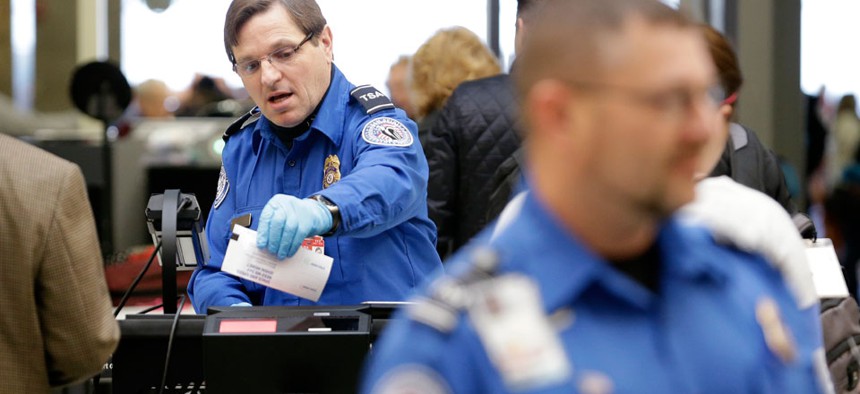TSA Wants Machines to Scan Through Your Coat, Shoes and Belt

Elaine Thompson/AP
Desired technology could automatically screen 250 airplane passengers an hour.
Airplane passengers could keep their shoes on as they breeze through security checks at a speed of 250 people per hour without waiting for screeners to probe a video screen, under a new Homeland Security Department plan for next-generation body imagers.
The pods "will automatically detect the required threats with no operator interpretation required," states a market research survey released on Tuesday. "People being scanned should not be required to significantly alter walking paths or divest beyond current procedures. An ultimate goal is to significantly reduce divesting of personal items such as shoes and reach a 'screen-while-walk' operational capability."
The plan does not include a timeline for system development or installation. Contractors have until March 11 to submit machine proposals.
The automatons would be required to detect concealed explosives, homemade bombs, shrapnel, small handguns and knives, with some privacy constraints. Tuesday's call for ideas requires that submissions include "privacy protection features, software and algorithms for individuals being screened."
Security personnel at checkpoints will be notified of a potential threat by an alarm connected to the system.
Fliers might also be permitted to keep on bulky coats during the winter holiday travel season. "Detection should occur through a minimum of 2 layers of clothing concealment where those layers are composed of cotton, cotton-polyester, wool, silk and leather materials among others," DHS officials said.
Other Homeland Security components that might use the scanning robots include Customs and Border Protection and the Federal Protective Services, which is responsible for guarding 9,000 federal facilities and checkpoints.
The department is "in the planning stages" for the development program and the research request is part of an "alternatives analysis to assess the overall technical risk and readiness" of the plan, according to officials. "This program will incorporate recent scientific discoveries in imaging technology into commercial people screening systems for eventual deployment to DHS operational components.”
Shoe-viewing tools have tripped up TSA in the past. In late 2012, the agency abandoned a project to buy footwear scanners, saying proposals didn’t meet technical or operational requirements. Contracting experts translated that to mean the tools were either expensive, unreliable or emit too much radiation -- though not at levels as toxic as half a century ago.
Retailers between 1930s and 1950s measured customers' feet with a device called a shoe-fitting fluoroscope that subjected customers to 4 milliroentgens per hour -- eight times as much as the present day limit. "When you put your feet in a shoe-fitting fluoroscope, you were effectively standing on top of the X-ray tube," said a report by the Oak Ridge Associated Universities, an academic consortium. "The only 'shielding' between your feet and the tube was a 1-millimeter thick aluminum filter."
Get the Nextgov iPhone app to keep up with government technology news.






